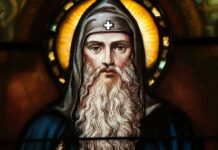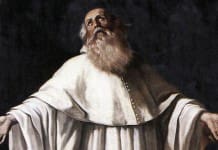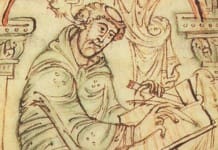The electric motor is one of the most significant inventions ever created by man and is paramount in founding the backbone of our modern industrialized society. An electric motor takes energy in the form of electricity and converts it to mechanical energy i.e. physical movement. Running in reverse, the electric motor becomes a generator that produces electricity and is at the heart of every electrical grid. It is found in a multitude of diverse applications, from household appliances and power tools, to computers and wrist watches. Over many years and gradual improvements, we arrived at the electric motors that are used all across the globe today. However, most don’t know that the earliest form of an electric motor was actually invented by a Scottish monk almost 300 years ago.
Andrew Gordon was a Benedictine Monk who invented the electric motor during the 1740s. He was born June 15, 1712 in the town of Cofforach in Angus, Scotland. Born to an old aristocratic family of wealth, he was given the baptismal name George. At the age of 12, he traveled to the Scots Monastery in Regenburgs, Germany and attended a Benedictine Scottish Seminar. There he completed a course of five-year general education studies and then studied abroad in various countries in Europe. In 1732, he returned to Regensburg and enrolled as a novice in the monastery and studied scholastic philosophy. In 1737, he was ordained to the priesthood the same year he graduated with a degree in law and theology from the Benedictine University of Salzburg.
After his graduation and ordination, he became a professor of philosophy at the University of Erfurt. He quickly became known for his works on electricity, where he published three papers giving him a considerable reputation in the scientific community. The three papers were:
• Phaenomena electricitatis exposita (1744)
• Philosophia utilis et jucunda (1745)
• Physicae experimentalis elementa (1751–52)
After writing his papers, he invented two early types of electrical motors, the electric whirls, and the electric charms. In early textbooks about electricity, both were described and usually credited to Gordon. The electrical whirl is comprised of an array of angled brass wires affixed to a central hub able to rotate. When supplied with electricity, an electrical charge builds up at the pointed ends of each spoke. Eventually, the electrical charge builds up enough to ionize air molecules, creating a secondary electrical charge that is repelled by the charge on the spokes, ultimately creating movement. Through the movement of the spokes on the whirl by electricity, he invented the first primitive electric motor, classified as an electrostatic reaction motor.
Electric chimes are similar to the whirl, except the spokes are small bells that move and strike larger bells to produce noise. Benjamin Franklin is usually credited with the invention of the electric chime, even though Gordon invented it. In his famous lightning rod experiment, he used Andrew Gordon’s electric whirl as electrical annunciator and claimed credit for it.
Researchers that came after him based their work on his papers and the electrical principles discovered from his inventions. His early work was instrumental in providing for the modern electrical motor that is used today universally, and his impact cannot be understated in advancing the collective knowledge of electricity.
Photo credit: Bubushonok / Shutterstock.com


















[…] SOURCE: https://ucatholic.com/blog/the-scottish-monk-that-invented-the-electric-motor/ […]
a lot of the earliest electrical/electronic information came from the vatican archives saved from the conflagration at alexandria…the crusades were all about electricity my friend….tesla too, and many many others, teslas father way up in the church hierarchy…….the problem has always been interpretation…..and access, of course….i would suggest studying the coins in philip griersons dumbarton oaks book BYZANTINE COINS …some interesting plates: 48 and 49 for electronic symbolgies, plate 54 and 55 for antennae (Cross Potent), plate 34(especially #622-624) and 44 antennae and tv like images, and many portrayals of resistance, ground, amperage vs voltage, much more…..good luc….b
[…] The Scottish Catholic Monk That Invented The Electric Motor […]
[…] https://ucatholic.com/blog/the-scottish-monk-that-invented-the-electric-motor/ […]
[…] https://ucatholic.com/blog/the-scottish-monk-that-invented-the-electric-motor/ […]
[…] The Scottish Catholic Monk That Invented The Electric Motor […]
To whom it may concern
my name is Jana and I work at school in Erfurt/Thuringia/Germany which has the name “Andreas (Gorge Aka Andrew) Gordon”. We have been searching for a picture of Andreas for a long time and are therefore more than happy that we found this one. I do have two questions: 1. Does the picture on the left-hand side on the top really represent Andreas (George Aka Andrew) Gordon? Do you know when this picture was painted?
2. In case the answer is yes and it represents Andreas Gordon, is it still protected by copyright or are we legally allowed to use it in order for decoration in our school or as a printing on a medal of honour for our best students?
Thank you so much for your time
Best regards
Jana Eiríksson